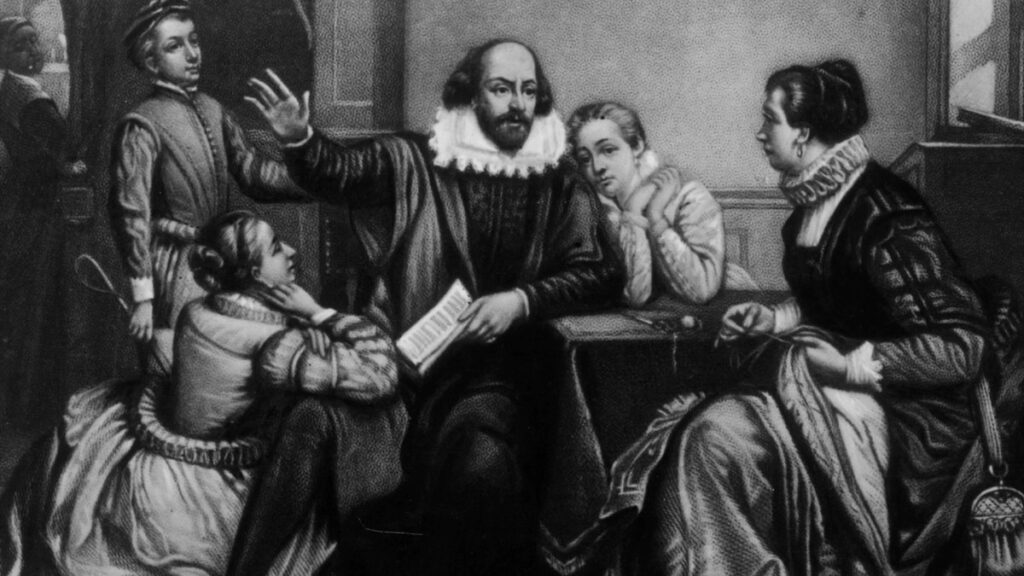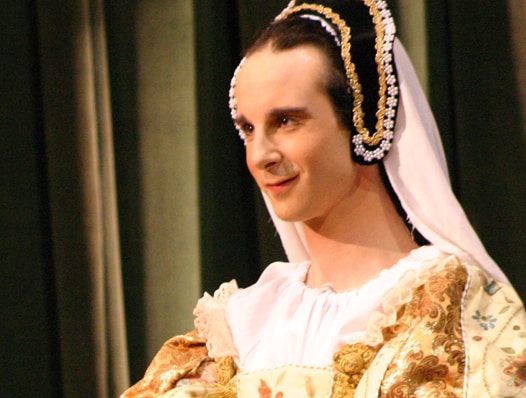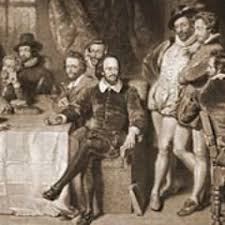Theatres were an integral part of Elizabethan society. It was a source of entertainment and a great opportunity for writers and actors to showcase their talents.
Before the Renaissance period actors were like vagabonds who wandered around places and performed wherever they were allowed like open squares of towns, houses of noblemen and courtyards.
The plays became popular over time which led to the establishment of numerous theatres like “The Globe”, which still stands tall today.
In 1576, James Burbage a famous actor and entrepreneur built the first-ever public theatre called “The Theatre”.
His enthusiasm flourished the theatre business and brought many young playwriters and actors into the limelight and one such writer is William Shakespeare.

Life in Elizabethan theatre
Contents
There were both public and private playhouses during Elizabethan times. People enjoyed going to the theatre and watched their favourite actors take part in the plays. But there was resentment and lack of apathy towards the actors.
The playhouses often harboured antisocial activities and were places for all sorts of vices and immoral activities. So, people from noble families resented going to the playhouses.
The Churches were also against theatres in those times. They believed that the theatre was spreading a plague which had grave consequences in society.
In those times, women were not allowed to participate in plays. So, young men and boys dressed as women used to play the female leads. This was considered as blasphemy in those times and was one of the reasons that people and churches opposed theatres.
Why were there no female actresses seen at the Globe theatre?
Women, back then, were not allowed to work in theatres and the Globe was no exception. The female roles were performed by young men and boys of adolescent age. Sometimes, even old men performed as women for the roles of old and haggard ones.
Is the Globe theatre still standing?
The original Globe theatre was lost in demolition by a deadly fire. However, Shakespeare’s Globe is still standing and is perhaps the most famous theatre in the UK.

How ere Elizabethan theatre companies organized?
The acting troupes required to have a licence, to prove that they were legally permitted to produce plays and had the patronage of a nobility. The troupes had to be headed by a member of the aristocracy, although, in most cases the responsibility of the patron ended at just allowing the troupes to use his name.
The actors were mostly hired for a specific time and specific role, except for a few important and famous actors who became a part of their respective troupes.
Licenses of Elizabethan acting troupes
Some of these acting troupes had a bad reputation. They were quite unruly and created a nuisance in the society.
In order to control them, regulations were imposed on these troupes. Licenses were granted by the Queen to the aristocracy in order to maintain these troupes. At first, the actors only performed at the halls of their patrons, but later on, the rules were relaxed.

All performers had to show their credentials and register their plays before the performances to pass the board of censorship. This was done to restrict any criticism against the crown and the public affairs.
But still, these troupes lacked professionalism and were often treated as servants to the masters of the household.
Venue licenses were obtained from the Bailiff at the Stratford Guild Hall. John Shakespeare, father of William Shakespeare was the Mayor and elected Bailiff of Stratford in 1568.
Some of the licensed troupes that visited Stratford were the Earl of Leicester, Warwick’s men acting troupe, Berkeley’s men and Worcester’s men.
The Sumptuary Laws
The Sumptuary laws put restrictions on the clothing of the actors. You can easily distinguish actors who wore clothing according to their ranks. Any violation of these laws was punishable.
Costumes of theatres
The actors wore vibrant and colourful clothes made of layers of fabric. Since women were not allowed to perform, young men and boys enacted female roles.
Women clothing was elaborate and whalebones were used to create a petite appearance. Men wore stockings and full-length dresses.
Men’s costumes consisted of breeches, wigs, shirts, stockings, fitted coats, cape, and a hat. Clothes were made of fur, silk, cotton, and laces.

Some notable Elizabethan acting troupes and companies
Famous acting companies of the Elizabeth age were:
The Earl of Leicester’s men
The Earl of Leicester’s men was founded in 1572 by the members of the Leicester household was one of the favourites of Queen Elizabeth and was granted the royal patent.
In 1576, James Burbage who was also a member of the troupe built the first-ever theatre and named it “The Theatre”.
The troupe performed consistently from 1570 to 1583 under the leadership of William Kemp, a great actor of Tudor age.
In 1583, the company lost its royalty and in 1588 it merged Lord Strange’s Men.
Lord Strange’s Men
Lord Strange’s Men, another prominent theatre group performed from 1588 to 1594 in collaboration with the Admiral’s Men. It is said that they were the first to employ William Shakespeare and have staged many of his famous plays including “The comedy of errors”.
They performed regularly at the famous “The Theatre” and the “Rose Theatre”. Some of their stage plays include “The Jew of Malta” and “Orlando Furioso”.
They lost their patronage in 1594 and thereby the group headed to London and started performing there.
Lord Chamberlain’s Men
Chamberlain’s Men was a very famous theatrical troupe of Elizabethan times and William Shakespeare was closely associated with this group.
The company was first known as Hunsdon’s Men when Hundson took over the office in 1585. After his death in 1596, his son George Carey, the second Lord Hundson took control of the office.
In 1597, it was taken over by Lord Chamberlain and was known as Lord Chamberlain’s Men until March 1603, when James I took over the patronage and it was renamed as the King’s Men.
Shakespeare is most known for his association with which troupe of actors?
Shakespeare was most intimately associated with the Lord Chamberlain’s Men and was a shareholder of the company.
Acting troupes in Shakespeare’s times comprised of patrons, shareholders who were the also the writers and actors of the company, the prompt-men and many others.

The Admiral’s men
The Admiral’s men originally known as Lord Howard’s Men named it after their patron Charles Howard, the 1st Earl of Nottingham.
Lord Howard became England’s High Admiral in 1585 and the company changed its name to Admiral’s Men.
Christopher Marlowe, one of the notable playwriters of those times were closely associated with this troupe and performed several of his famous plays like “Doctor Faustus” and “Tamburaine the Great”.
The company was considered to be one of the finest in Elizabethan times. However, it lost its glory upon the retirement of Edward Alleyn who was the chief actor of the group.
